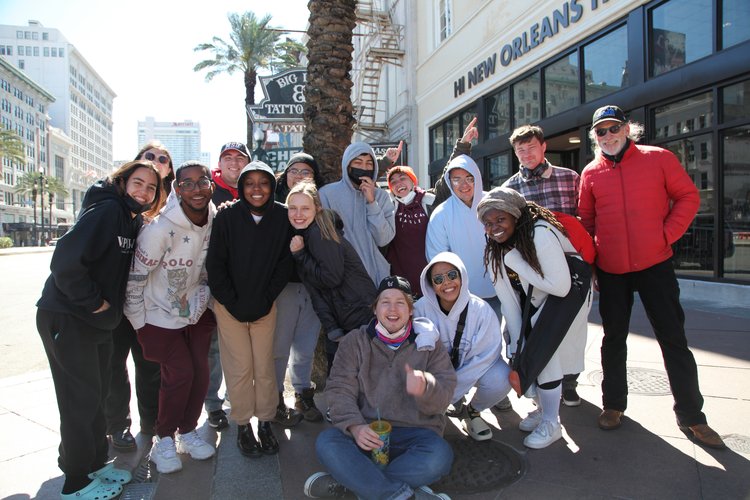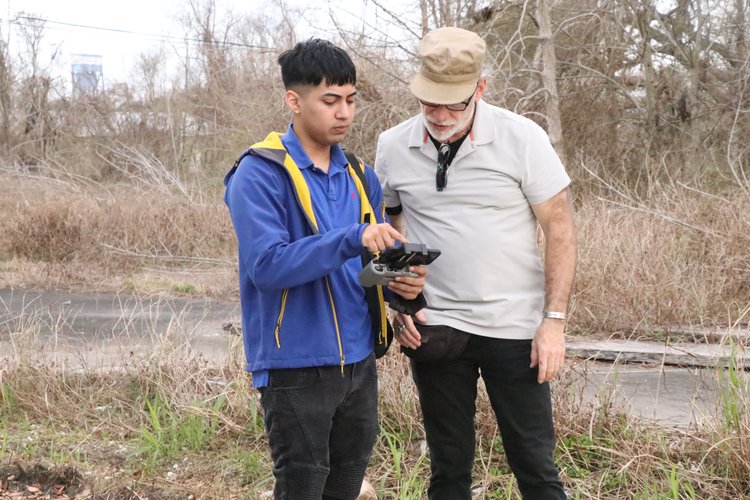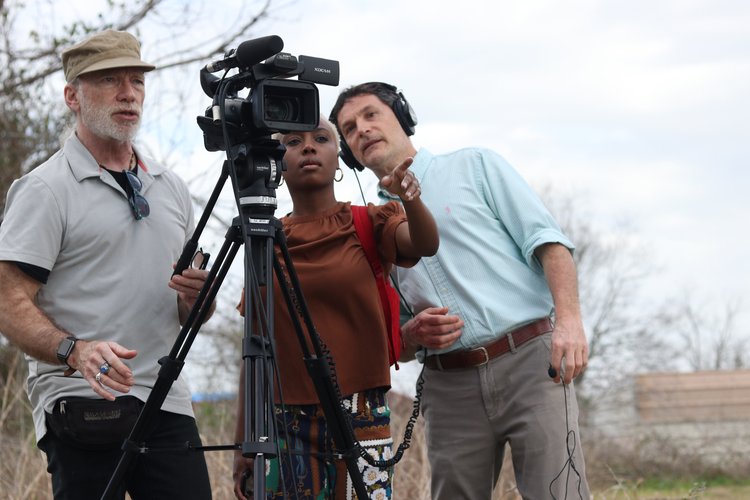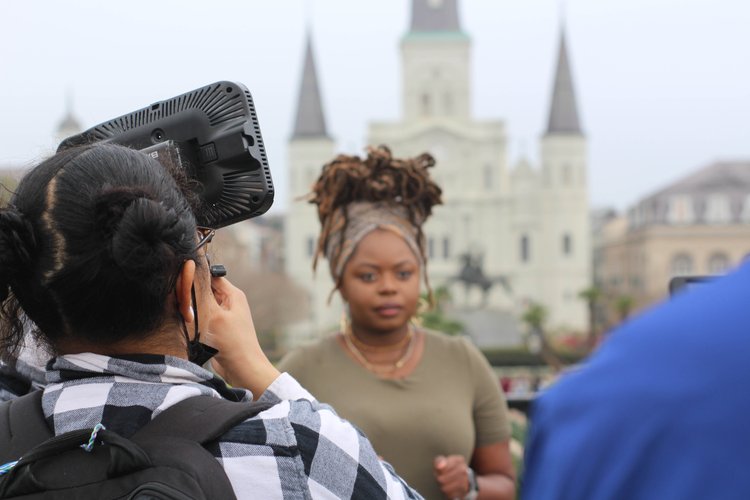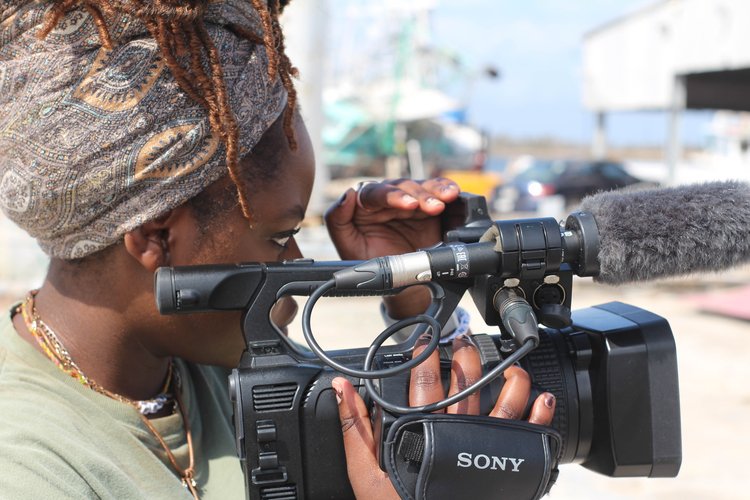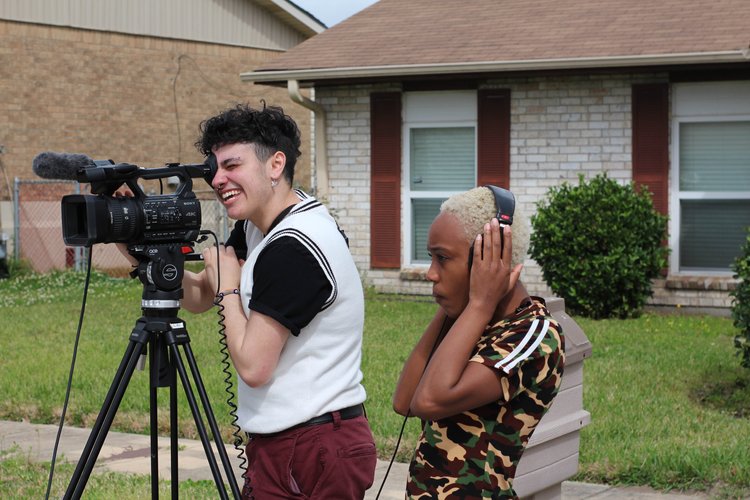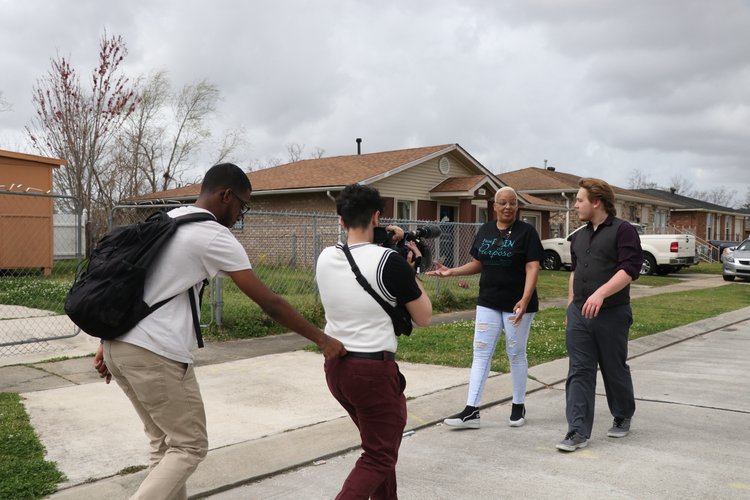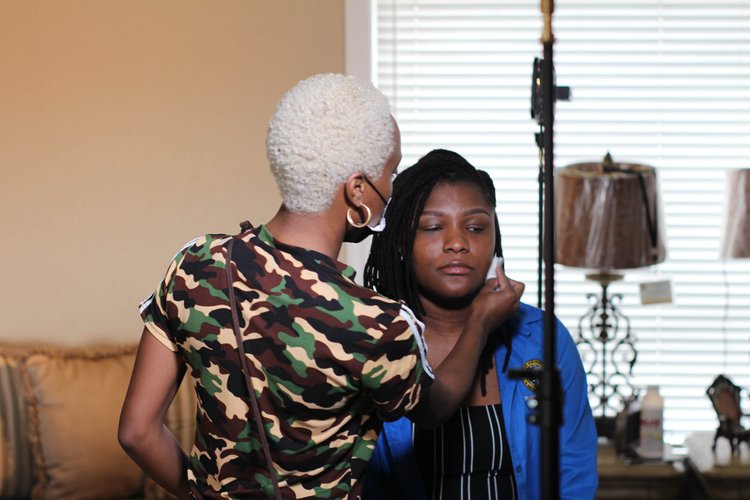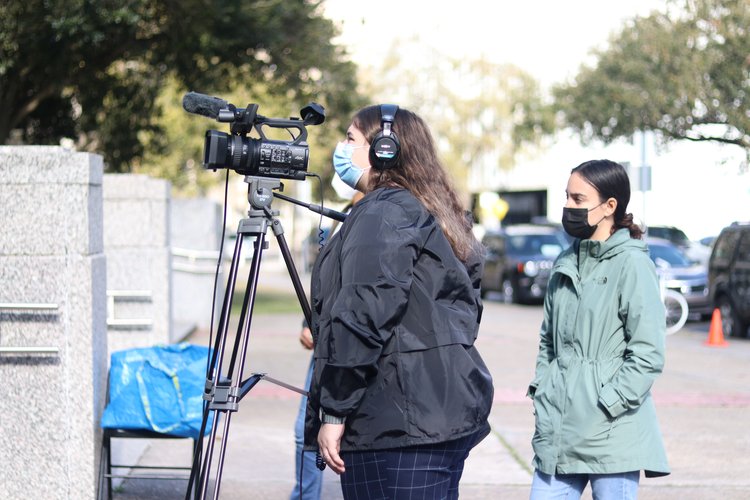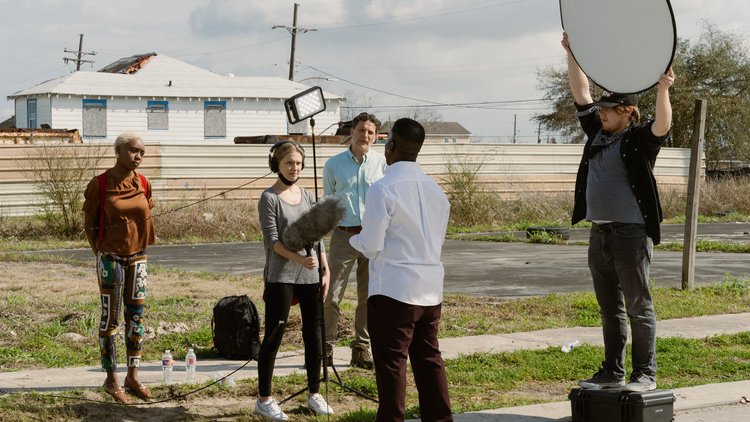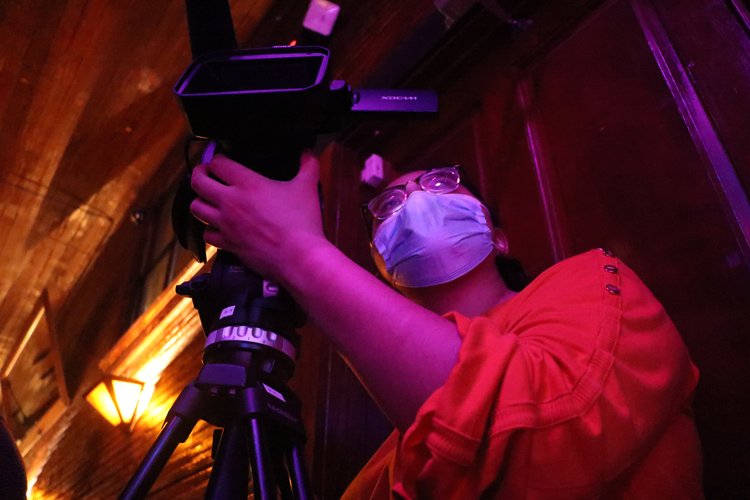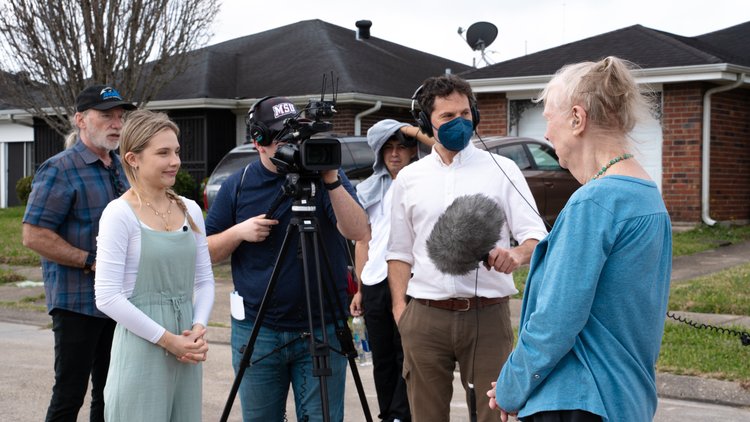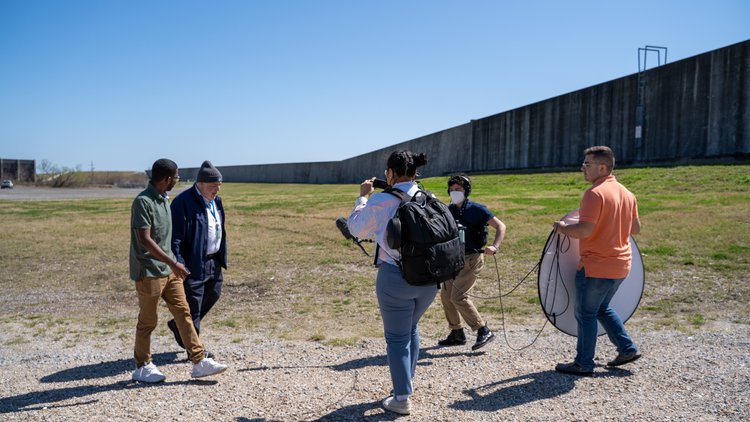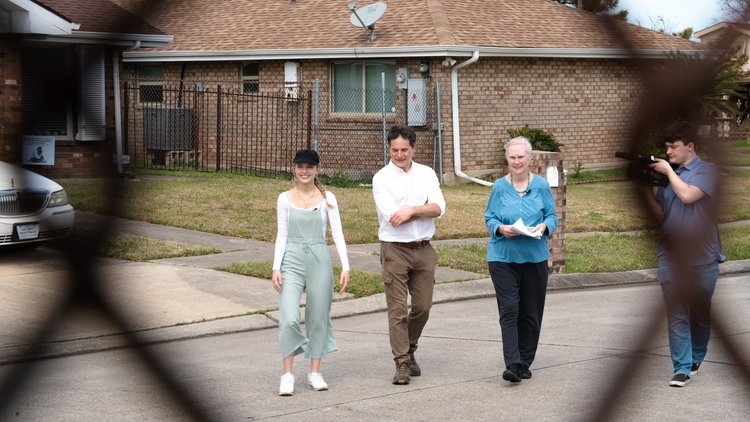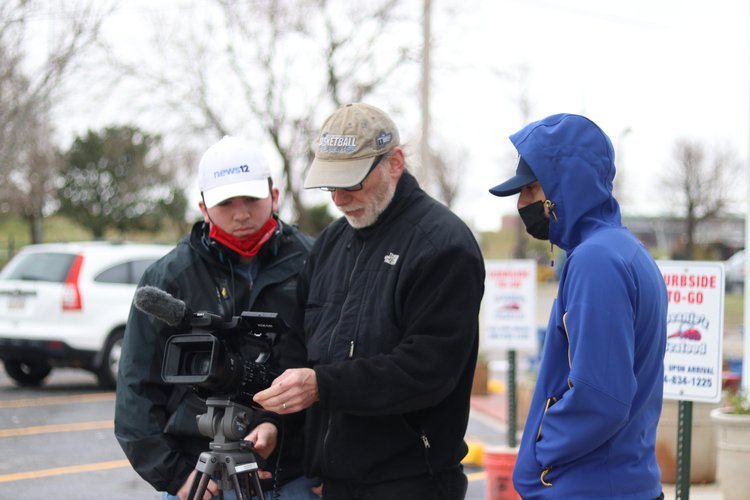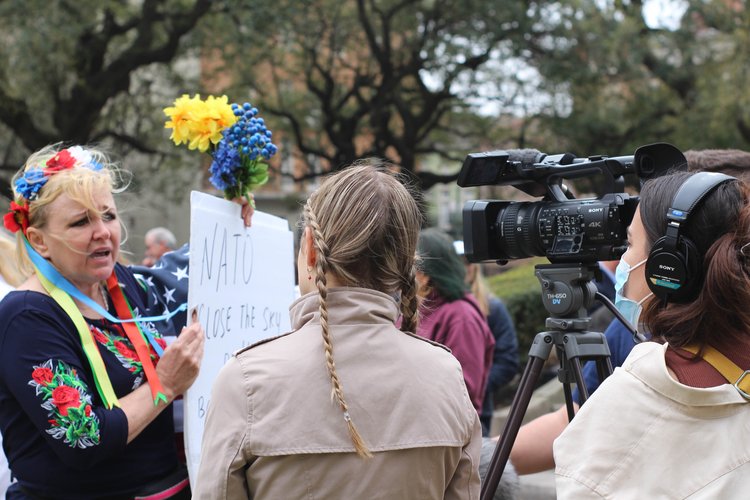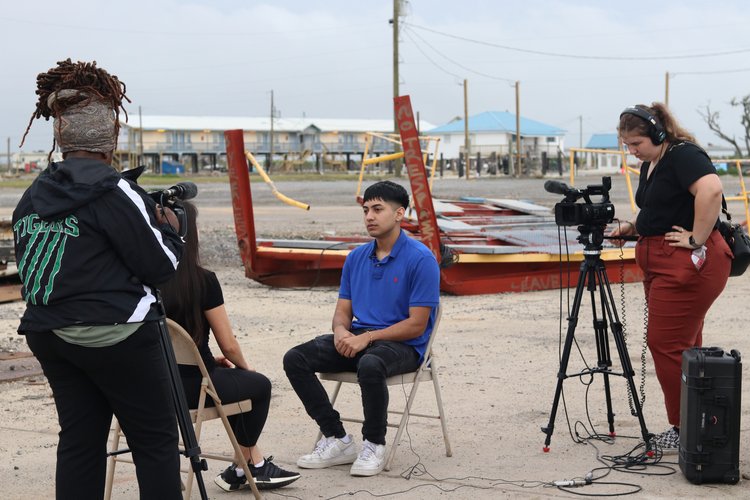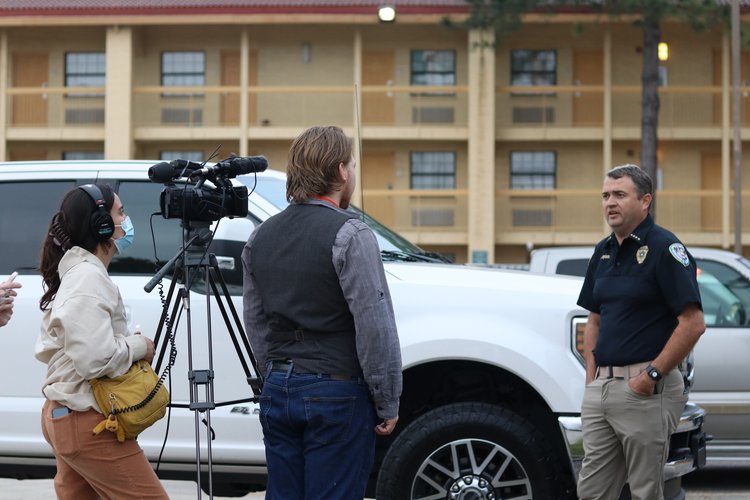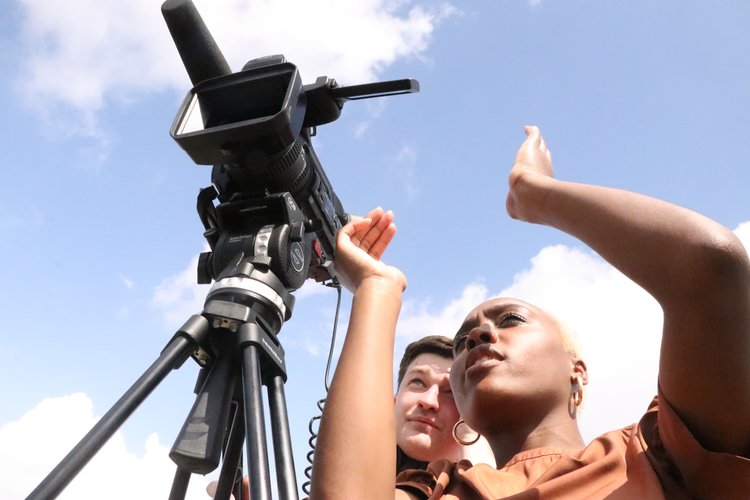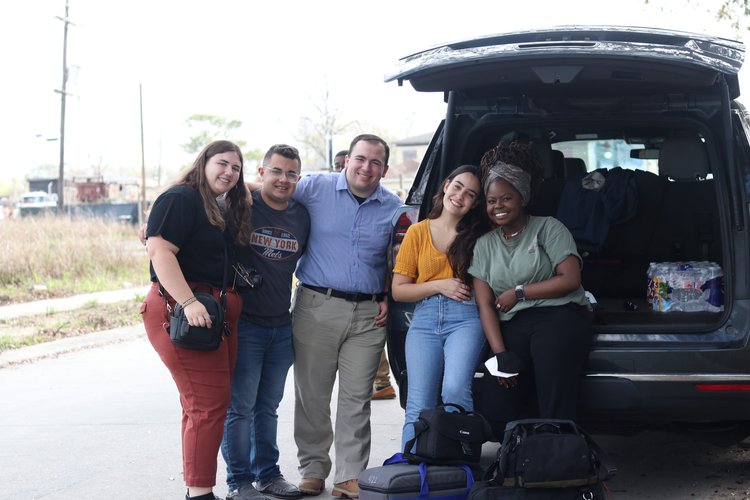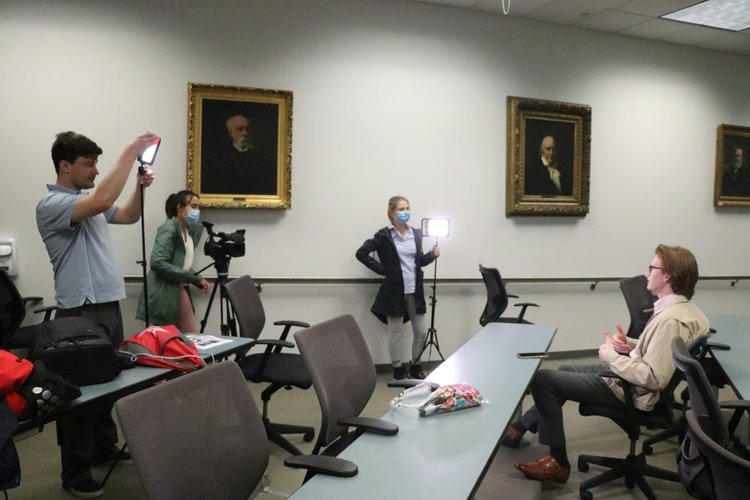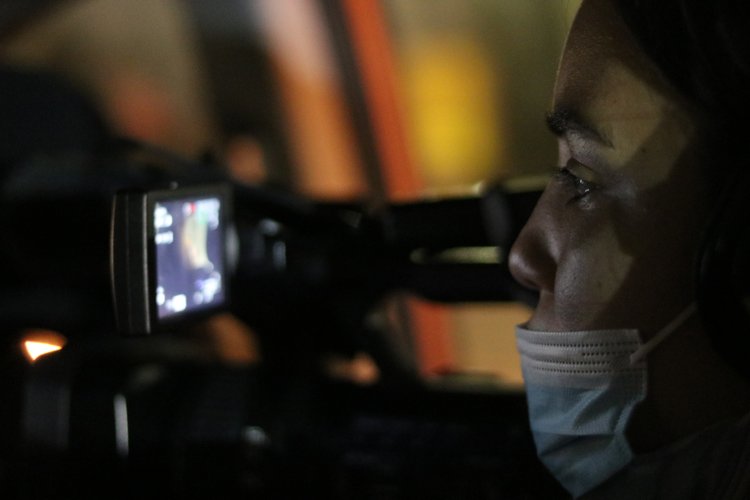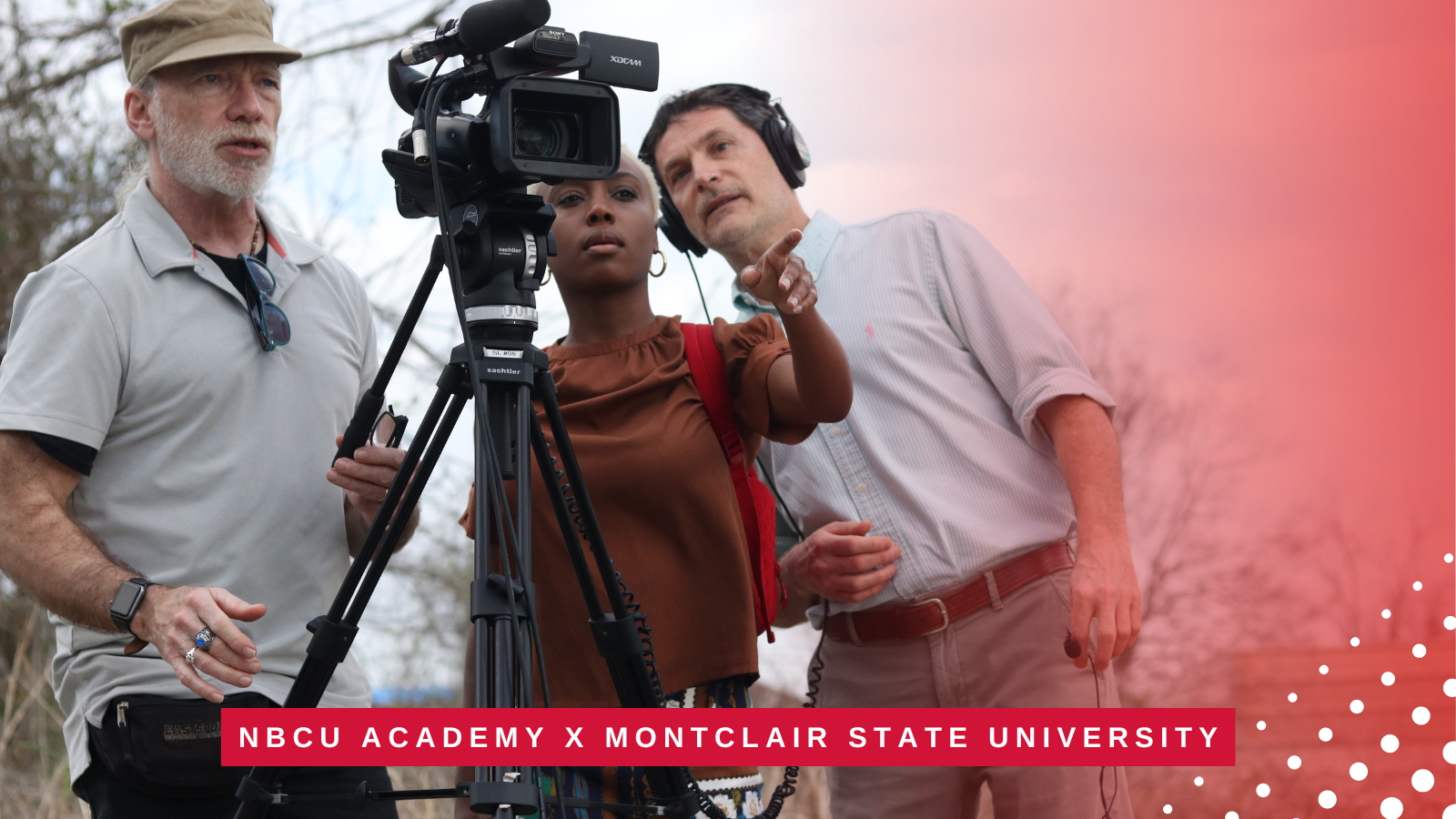
“Head of the Class” highlights original reporting and video from student journalists, in collaboration with NBCU Academy. The first in the series is Montclair State University’s “New Orleans: Raging Storms,” showing how climate change, racism and economic inequality have impacted the city since Hurricane Katrina.
Only one of my 14 students had been to New Orleans before, so there was excitement upon arrival. We pulled up in front of the hostel on Canal Street and they immediately noticed the combination tattoo parlor/check cashing joint next door. Welcome to The Big Easy!
It may have been their first trip to New Orleans, but it wasn’t mine. I’ve been a field producer with NBC News and CBS News for 40 years and have reported in that town on subjects ranging from crime and Hurricane Katrina to the Super Bowl. But this trip would present challenges I hadn’t seen before.
My colleague David Sanders was my teaching partner on the trip. He and I have been organizing these reporting trips for more than a decade, but this year would be different – the trip is built into a Montclair State University course called “On the Road: Field Reporting.” That means much more pre- and post-production. This time, the trip would really mirror a professional news broadcast.
The pre-production phase was the weeks before the trip. Students pitched stories, found characters and worked on a schedule. Fourteen stories were pitched, but as in the real world, about eight worked out. Teams were formed, and before we knew it, we were signing out equipment and headed to the airport.
Two students, Gabby Taylor and Carter Winner, were our senior producers. They would be in charge of scheduling and overseeing equipment. David and I were, as per university policy, the drivers. We had a 15-passenger van and an eight-passenger Suburban.
We arrived in New Orleans early Saturday afternoon and immediately left for a shoot about a jazz band playing in a bar in the Bywater section. It was for Ryan Breyta’s story about music and the tourist economy. The next day, we divided the crew. One team began filming Kaya Maciak’s story on environmental racism in East New Orleans, and the other team headed across town to interview a mother who had lost her son to violence for a story on crime, produced by Drew Mumich and Michelle Coneo Fernandez.
The plan was to fill each day with shooting at least part of a story.
On Monday, a team headed two hours south to Bayou Country for a story produced by Louis Biondolillo and Khan Hussain about St. Vincent’s Seafood Co., a family business that lost all its fishing boats during Hurricane Ida, and how climate change is affecting the important Louisiana seafood industry. The other team went to the Lower Ninth Ward to film Givonna Boggans’ story about a man who opened up a food market/laundry/barber shop to help his community’s recovery after Katrina.
Each night, the students formed groups and explored the city after dark. David and I asked for a midnight curfew to be upheld: There were early mornings and long days.
On Monday night, David and I took the famous St. Charles Trolley to the Garden District for a meal. After dinner, David said he wasn’t feeling well. With Covid still in the air, he decided he would test in the morning if he still didn’t feel up to par.
The next morning, David tested positive for Covid and immediately began to quarantine. That meant yours truly was not just the only professor, but also the only driver.
I immediately went into producer mode and imagined the worst – we would all be infected. I’ve been challenged in the field before, interviewing Moammar Gadhafi in Libya and jihadis in northern Lebanon and almost getting shot by a cop in Miami, but this was, in its own way, terrifying.
The students handled the pressure beautifully. The university was notified, rapid tests were procured and the student journalists stuck to the mission at hand – get their stories!
I became more of a cab driver than a professor. Some students took Ubers, others walked to their assignments. They all kept their cool and remained focused.
Early Wednesday, I got a text from Kaya – she was sick and experiencing Covid-like symptoms. I immediately got her a private room in the hostel and began to fear we’d all get sick.
But that didn’t happen. What did happen is the rest of the team started to figure out how to continue filming Kaya’s story as well their own projects. It was beautiful.
David continued to quarantine, Kaya tested negative, and by the end of the week, she started getting out with the crews.
The van then got towed, equipment got damaged, a tornado warning was issued, and a window broke in the guys’ hostel room during the storm – but somehow they got every story they set out to do. This was a real-world journalism experience for all.
We made it back to campus on Saturday as a group. David would stay the weekend.
The weeks that followed involved writing and then rewriting and then editing and reediting. Each class became a screening session with all the students critiquing and supporting each other’s work.
I told them the trip was difficult, but in the end, nothing would speak louder than SUCCESS. And that’s what they did – produce a half-hour of damn good video journalism.
It was a trip they – and their professors – will never forget.


